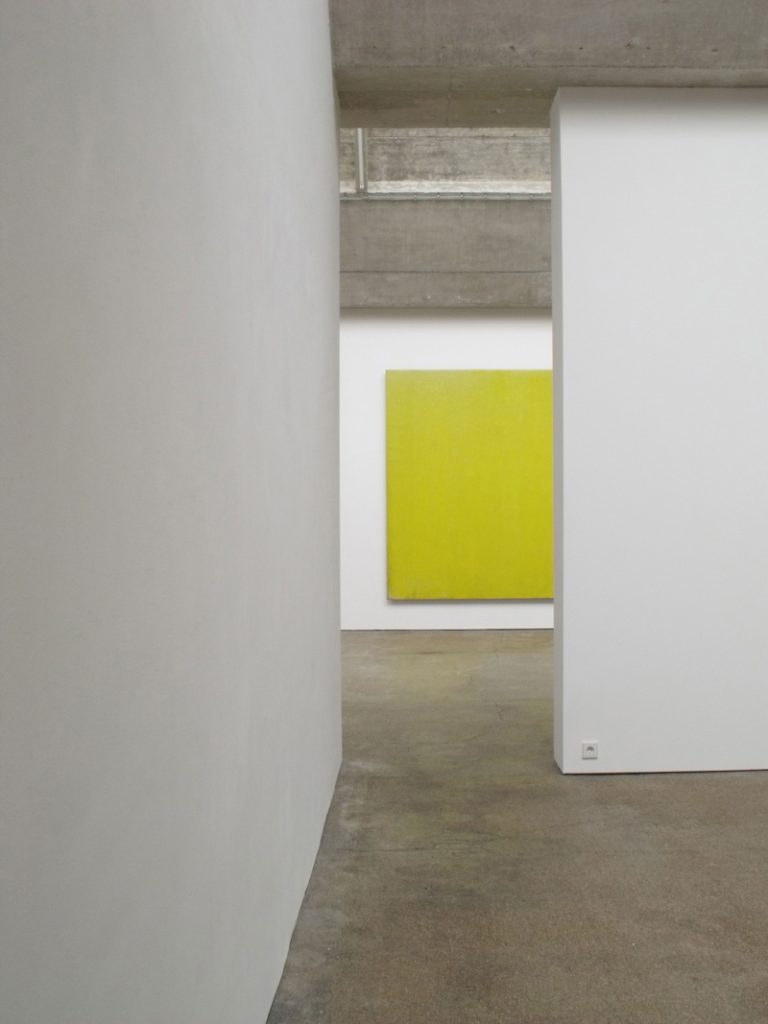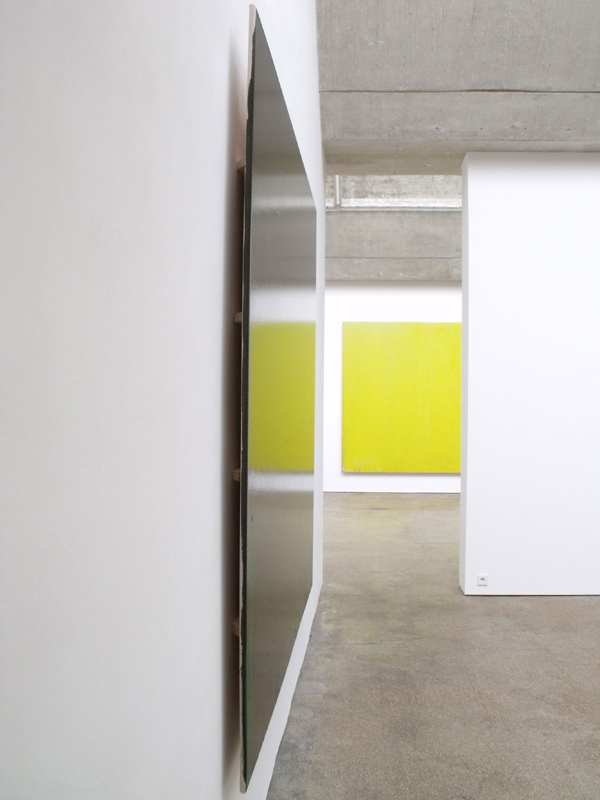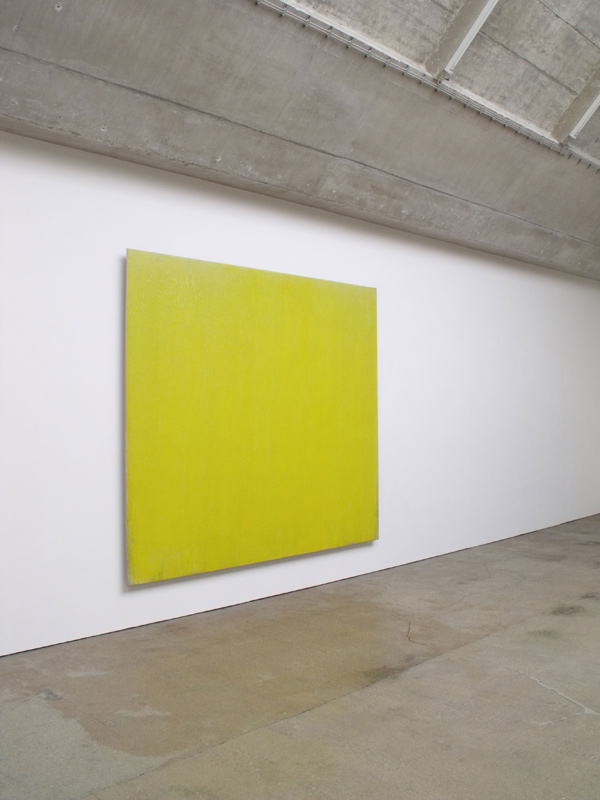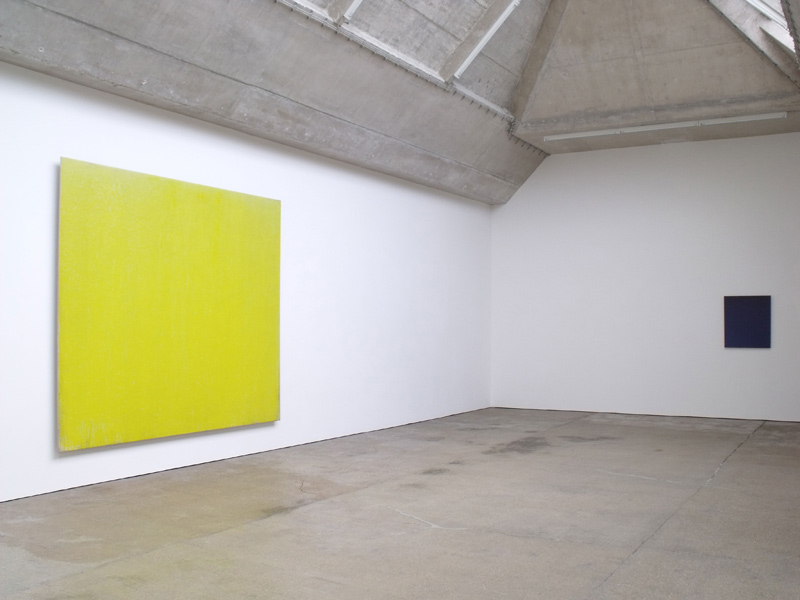Joseph Marioni
April 28 – July 19, 2012
The paintings of Joseph Marioni celebrate light. In painting, light can be represented solely through color. For this reason, it has long been one of painting’s highest aspirations to wrest a radiance from color and imbue it with a luminous quality. Marioni employs a glazing technique similar to that used by the Old Masters of the Gothic and Early Renaissance periods: color is applied in several thin, almost translucent layers. When layers of the same hue are superimposed, the color becomes more intense; when different shades are glazed, the hue gains depth. The paintings’ brilliance is thus due solely to the application of paint, not the paint material itself.
Marioni uses a thin acrylic binder to dissolve his pigments. Through the varied glazes—some using different, others related shades—unexpected color spaces emerge, as the layers oscillate between transparency and opacity. This creates a peculiar simultaneity of surface and color space. Along the side edges, especially the bottom edge, the paintings reveal their process of creation. Here, the overlapping of color layers becomes visible, as Marioni deliberately does not align the layers exactly but separates them, making their varying flows apparent. This disruption of the smooth surface at the lower edge of the painting allows viewers to grasp the physicality of the work and trace the flow of the paint medium. The paintings acquire a sense of corporeality, not least through this marked boundary of the image.
Joseph Marioni is part of the New York Radical Painting movement and is regarded as its most prominent representative. Radical Painting is less a school of art than a discourse on the essence of painting itself: Can painting exist independently of all external references? Can painted color alone evoke such intensity that the viewer becomes absorbed in its mere configuration?
In the 1950s, American artists such as Barnett Newman, Mark Rothko, and Jackson Pollock had already demonstrated that this was possible. However, in the 1960s, two art movements emerged that rejected the expressive power of the autonomous image: Pop Art and Minimal Art. Their works once again relied on external references—media content in the case of Pop Art, or geometric grids in the case of Minimal Art.
In the early 1970s, Brice Marden and Joseph Marioni sought to redirect the focus back to the intrinsic value of painted color. Marioni published a manifesto titled Radical Painting—an attempt at a timeless debate and inquiry into the original and fundamental nature of painting.
Installation Views





